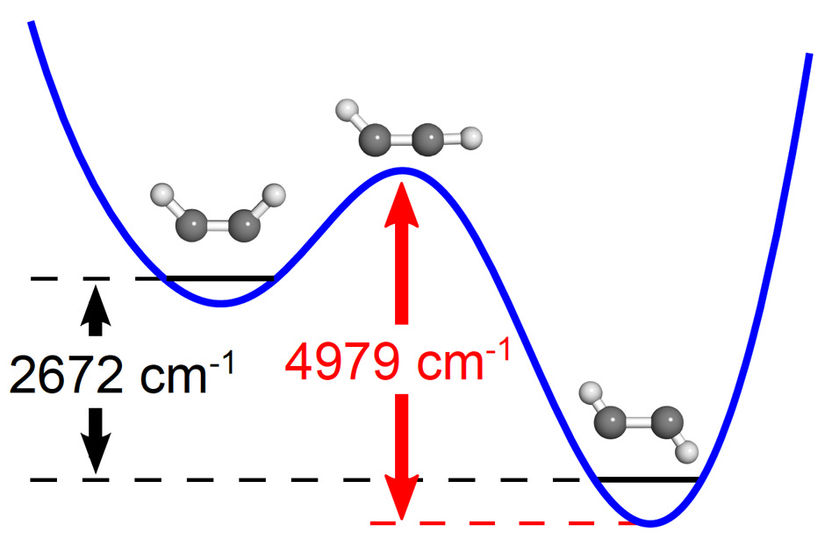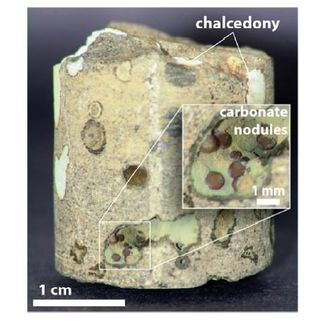New technique both enhances oil recovery and sequesters carbon dioxide
A proposed recovery technique for oil extraction developed by a Penn State-led research team not only outperforms existing drilling and recovery techniques, but also has the potential to sequester more carbon dioxide in the process.
The team estimated that companies using this new technique would greatly improve oil recovery rates. They developed a model that indicates that the process could extract between 78 and 90 percent of the oil in a reservoir over several decades. Existing drilling techniques in use today extract a maximum of 50 to 60 percent of the estimated total volume of oil before production, and on average, that number is closer to 35 percent.
The model uses horizontal drilling, in which wells are drilled up to about 4,000 meters underground, parallel to the Earth's surface, through known oil reservoirs. This differs from vertical drilling techniques, in which wells run perpendicular to the Earth's surface.
Two wells, organized in a staggered line drive, form the basis of the model -- one well in the top of the reservoir to inject supercritical carbon dioxide into the system, and another well at the bottom of the reservoir to extract oil. Carbon dioxide normally behaves like a gas at room temperature and pressure, but when it is pressurized and heated past a certain point -- the critical point -- it becomes a supercritical fluid, which exhibits liquid density and gas viscosity. When injected at a continuous rate, supercritical carbon dioxide is an excellent solvent that is able to contact oil and form two hydrocarbon phases -- one that is light, containing a significant amount of carbon dioxide, and one that is denser, containing more oil.
"The idea of our model is that, if you can inject carbon dioxide as a supercritical fluid into the reservoir, it will extract light components from the oil, such as methane. This forms a less dense and less viscous fluid. Then, the reservoir is drained of water and oil, and the more buoyant, carbon-dioxide-rich fluid expands in a controlled way toward the lower well, where the oil can be extracted," said Russell Johns , professor of petroleum and natural gas engineering , Penn State.
The team used data from reservoirs in the Gulf of Mexico, and then developed a computerized simulation that ran 7,000 times to account for variations in reservoir properties that exist across the U.S.
"In any given reservoir, the properties change spatially based on the depth, chemistry, physical composition and other factors," said Liwei Li, graduate student in energy and mineral engineering, petroleum and natural gas engineering option, who was lead author on the paper published in a recent issue of the International Journal of Greenhouse Gas Control. "In our model, we used geostatistical and petrophysical techniques that would allow us to account for those variations,"
The team's research suggests that this novel method of carbon sequestration would be much more effective and reliable than sequestration techniques currently being investigated, such as sequestration into deep saline reservoirs or water-alternating gas.
"If you were to inject carbon dioxide into saline deposits underground, you would need to drill wells and install pipelines to transport it to the site," said Saeid Khorsandi, an EME graduate student in the PNGE option who was a member of the research team. 'This creates an added expense for companies but no added revenue. Using our model, however, companies can leverage their existing horizontal drilling infrastructure, which is more economical in the long run."
The only limitation of the model is that it requires a closed environmental system, in which carbon dioxide cannot escape from the reservoir and water and oil is drained from below.
"Imagine you had a cup filled with water and you used a straw to take out water at a constant rate," said Johns. "You could keep doing that until you had nothing left as long as the water level was more or less horizontal. But if that cup was porous and contacted a deep underground aquifer, the cup would be constantly refilling, and the process would not be as effective since water would continue to occupy a significant amount of pore space. However, if the water and oil can be effectively drained like they are when using our approach, then there is significantly more room for storage of carbon dioxide."
Whether or not oil and natural gas companies will use the model depends on a number of factors, including the price of oil, the location of existing wells, the source and cost of carbon dioxide and the amount of oil predicted to be within reservoirs, the team said. This approach gives the best possible scenario of how recovery could be enhanced, while simultaneously storing carbon dioxide.
Most read news
Topics
Organizations
Other news from the department science

Get the chemical industry in your inbox
By submitting this form you agree that LUMITOS AG will send you the newsletter(s) selected above by email. Your data will not be passed on to third parties. Your data will be stored and processed in accordance with our data protection regulations. LUMITOS may contact you by email for the purpose of advertising or market and opinion surveys. You can revoke your consent at any time without giving reasons to LUMITOS AG, Ernst-Augustin-Str. 2, 12489 Berlin, Germany or by e-mail at revoke@lumitos.com with effect for the future. In addition, each email contains a link to unsubscribe from the corresponding newsletter.
Most read news
More news from our other portals
Last viewed contents
Arachidonic_acid
Evolva reaches milestone in BASF collaboration



























































